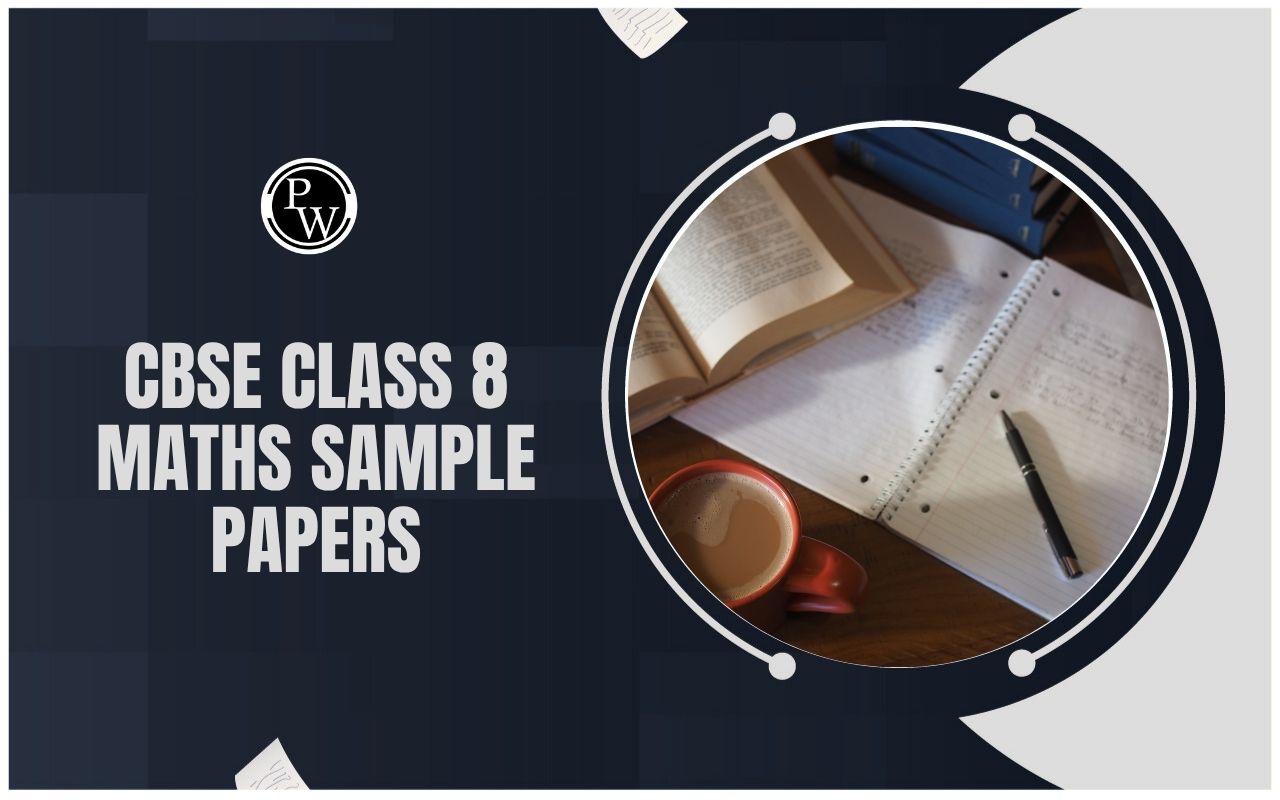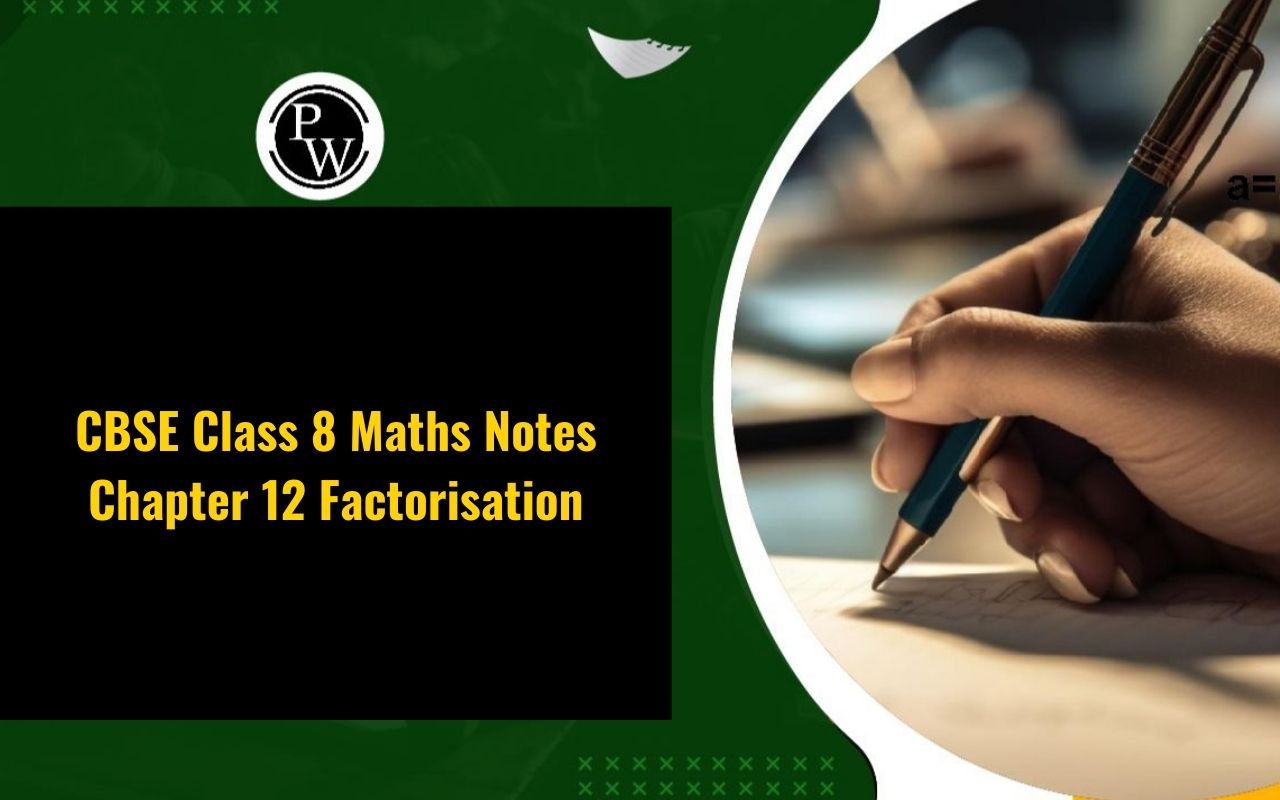
RS Aggarwal Solutions for Class 8 Maths Chapter 7 Exercise 7.4: Here, RS Aggarwal Solutions for Class 8 Maths Chapter 7 Exercise 7.4 provide a thorough understanding of advanced factorisation techniques. This exercise covers the factorisation of algebraic expressions using various methods, including grouping, applying algebraic identities and identifying common factors.
The solutions are detailed and step-by-step, helping students grasp how to simplify complex algebraic expressions into their fundamental factors. By solving these solutions students can improve their problem-solving abilities gain a clearer understanding of factorisation and enhance their preparation for exams.RS Aggarwal Solutions for Class 8 Maths Chapter 7 Exercise 7.4 Overview
RS Aggarwal Solutions for Class 8 Maths Chapter 7 Exercise 7.4 provide an in-depth overview of factorisation techniques. This exercise focuses on the application of advanced factorisation methods to algebraic expressions. Students are guided through the process of breaking down complex expressions into simpler factors using various techniques. These include grouping terms to find common factors, utilizing algebraic identities such as (a + b)² = a² + 2ab + b², and identifying patterns in expressions to simplify them. The exercise emphasizes a step-by-step approach ensuring that students understand each stage of the factorisation process. By working through the problems in this exercise, students can enhance their algebraic skills, build a stronger foundation in factorisation, and better prepare for their examinations.RS Aggarwal Solutions for Class 8 Maths Chapter 7 Exercise 7.4 PDF
RS Aggarwal Solutions for Class 8 Maths Chapter 7 Exercise 7.4 is available for download in PDF format. This PDF provides a detailed and structured approach to factorisation covering various techniques and methods used to simplify algebraic expressions. Students can access the PDF to explore step-by-step solutions, gain a deeper understanding of factorisation, and practice effectively. To download the PDF and enhance your learning, please use the link provided below:Download RS Aggarwal Solutions for Class 8 Maths Chapter 7 Exercise 7.4 PDF
RS Aggarwal Solutions for Class 8 Maths Chapter 7 Exercise 7.4 (Exercise 7D)
RS Aggarwal Solutions for Class 8 Maths Chapter 7 Exercise 7.4 are available below. This resource provide detailed solutions and explanations for problems related to operations on algebraic expressions.Factorise:
(Question 1) x 2 + 5x + 6
Solution: Find two numbers whose sum = (2 + 3) = 5 and product = (2 × 3) = 6
∴ x 2 + 5x + 6 = x 2 + (3+2)x + 6 = x 2 + 3x + 2x + 6 = x (x + 3) + 2(x + 3) = (x+ 3) (x + 2)(Question 2) y 2 + 10y + 24
Solution:
= y 2 + (6 + 4)y + 24 = y 2 + 6y + 4y + 24 = y(y + 6) + 4(y + 6) = (y+ 6) (y + 4)(Question 3) z 2 + 12z + 27
Solution:
= z 2 + (9 + 3)z + 27 = z 2 + 9z + 3z + 27 = z (z + 9) + 3(z + 9) = (z + 9) (z + 3)(Question 4) p 2 + 6p + 8'
Solution:
= p 2 + (4 + 2)p + 8 = p 2 + 4p + 2p + 8 = p (p + 4) + 2 (p + 4) = (p + 4) (p + 2)(Question 5) x 2 + 15x + 56
Solution:
= x 2 + (8 + 7)x + 56 = x 2 + 8x + 7x + 56 = x(x + 8) + 7(x + 8) = (x + 8) (x + 7)(Question 6) y 2 + 19y + 60]
Solution:
= y 2 + (15 + 4)y + 60 = y 2 + 15y + 4y + 60 = y(y + 15) + 4(y + 15) = (y + 15) (y + 4)(Question 7) x 2 + 13x + 40
Solution:
= x 2 + (5 + 8) x + 40 = x 2 + 5x + 8x+ 40 = x (x + 5) + 8(x + 5) = (x + 5) (x + 8)(Question 8) q 2 – 10q + 21
Solution:
= q 2 – (7 + 3)q + 21 = q 2 – 7q – 3q + 21 = q (q – 7) – 3 (q – 7) = (q – 7) (q – 3)(Question 9) p 2 + 6p – 16
Solution: Find two numbers whose difference is 6 and product 16.
= p 2 + (8 – 2)p – 16 = p 2 + 8p – 2p – 16 = p (p + 8) – 2 (p + 8) = (p + 8) (p – 2)(Question 10) x 2 – 10x + 24]
Solution:
= x 2 – (6 + 4)x + 24 = x 2 – 6x – 4x + 24 = x (x – 6) – 4 (x – 6) = (x – 6) (x – 4)(Question 11) x 2 – 23x + 42
Solution:
= x 2 – (21 + 2)x + 42 = x 2 – 21x – 2x + 42 = x (x – 21) – 2(x – 21) = (x – 21) (x – 2)(Question 12) x 2 – 17x + 16
Solution:
= x 2 – (16 + 1)x + 16 = x 2 – 16x – 1x + 16 = x (x – 16) – 1(x – 16) = (x – 16) (x – 1)(Question 13) y 2 – 21y + 90
Solution:
= y 2 – (15 + 6)y + 90 = y 2 – 15y – 6y + 90 = y (y – 15) – 6(y – 15) = (y – 15) (y – 6)(Question 14) x 2 – 22x + 117
Solution:
= x 2 – (13 + 9)x + 117 = x 2 – 13x – 9x + 177 = x (x – 13) – 9(x – 13) = (x – 13) (x – 9)(Question 15) x 2 – 9x + 20
Solution:
= x 2 – (4 + 5)x + 20 = x 2 – 4x – 5x + 20 = x (x – 4) – 5 (x – 4) = (x – 4) (x – 5)(Question 16) x 2 + x – 132
Solution:
= x 2 + (12 – 11)x – 132 = x 2 + 12x – 11x – 132 = x (x + 12) – 11(x + 12) = (x + 12) (x – 11)(Question 17) x 2 + 5x – 104
Solution:
= x 2 + (13 – 8)x – 104 = x 2 + 13x – 8x – 104 = x (x + 13) – 8(x + 13) = (x + 13) (x – 8)(Question 18) y 2 + 7y – 144
Solution:
= y 2 + (16 – 9)y – 144 = y 2 + 16y – 9y – 144 = y (y + 16) – 9(y + 16) = (y + 16) (y – 9)(Question 19) z 2 + 19z – 150
Solution:
= z 2 + (25 – 6)z – 150 = z 2 + 25z – 6z – 150 = z (z + 25) – 6(z + 25) = (z + 25) (z – 6)(Question 20) y 2 + y – 72
Solution:
= y 2 + (9 – 8)y – 72 = y 2 + 9y – 8y – 72 = y (y + 9) – 8(y + 9) = (y + 9) (y – 8)(Question 21) a 2 + 6a – 91
Solution:
= a 2 + (13 – 7)a – 91 = a 2 + 13a – 7a – 91 = a(a + 13) – 7(a + 13) = (a + 13) (a – 7)(Question 22) p 2 – 4p – 77
Solution:
= p 2 – (11 – 7)p – 77 = p 2 – 11p + 7p – 77 = p(p – 11) + 7(p – 11) = (p – 11) (p + 7)(Question 23) x 2 – 7x – 30
Solution:
= x 2 – (10 – 3)x – 30 = x 2 – 10x + 3x – 30 = x (x – 10) + 3(x – 10) = (x – 10) (x + 3)(Question 24) x 2 – 11x – 42
Solution:D
= x 2 – (14 – 3)x – 42 = x 2 – 14x + 3x – 42 = x(x – 14) + 3(x – 14) = (x – 14) (x + 3)(Question 25) x 2 – 5x – 24
= x 2 – (8 – 3)x – 24 = x 2 – 8x + 3x – 24 = x(x – 8) + 3(x – 8) = (x – 8) (x + 3)(Question 26) y 2 – 6y – 135
= y 2 – 6y – 135 = y 2 – (15 – 9)y – 135 = y 2 – 15y + 9y – 135 = y (y – 15) + 9(y – 15) = (y – 15) (y + 9)(Question 27) z 2 – 12z – 45
= z 2 – (15 – 3)z – 45 = z 2 – 15z + 3z – 45 = z(z – 15) + 3(z – 15) = (z – 15) (z + 3)(Question 28) x 2 – 4x – 12
= x 2 – (6 – 2)x – 12 = x 2 – 6x + 2x – 12 = x (x – 6) + 2(x – 6) = (x – 6) (x + 2)(Question 29) 3x 2 + 10x + 8
= 3x 2 + (6 + 4)x + 8 = 3x 2 + 6x + 4x + 8 = 3x (x + 2) + 4(x + 2) = (x + 2) (3x + 4)(Question 30) 3y 2 + 14y + 8
= 3y 2 + (12 + 2)y + 8 = 3y 2 + 12y + 2y + 8 = 3y (y + 4) + 2(y + 4) = (y + 4) (3y + 2)(Question 31) 3z 2 – 10z + 8
= 3z 2 – (6 + 4) z + 8 = 3z 2 – 6z – 4z + 8 = 3z (z – 2) – 4 (z – 2) = (z – 2) (3z – 4)(Question 32) 2x 2 + x – 45
= 2x 2 + (10 – 9)x – 45 = 2x 2 + 10x – 9x – 45 = 2x(x + 5) – 9(x + 5) = (x + 5) (2x – 9)(Question 33) 6p 2 + 11p – 10
= 6p 2 + (15 – 4)p – 10 = 6p 2 + 15p – 4p – 10 = 3p (2p + 5) – 2(2p + 5) = (2p + 5) (3p – 2)(Question 34) 2x 2 – 17x – 30
= 2x 2 – (20 – 3)x – 30 = 2x 2 – 20x + 3x – 30 = 2x (x – 10) + 3(x – 10) = (x – 10) (2x + 3)(Question 35) 7y 2 – 19y – 6
= 7y 2 – (21 – 2)y – 6 = 7y 2 – 21y + 2y – 6 = 7y (y – 3) + 2 (y – 3) = (7y + 2) (y – 3)(Question 36) 28 – 31x – 5x 2
= 28 – (35 – 4)x – 5x 2 = 28 – 35x + 4x – 5x 2 = 7(4 – 5x) + x (4 – 5x) = (4 – 5x) (7 + x)(Question 37) 3 + 23z – 8z 2
= 3 + (24 – 1)z – 8z 2 = 3 + 24z – 1z – 8z 2 = 3 (1 + 8z) – z(1 + 8z) = (1 + 8z) (3 – z)(Question 38) 6x 2 – 5x – 6
= 6x 2 – (9 – 4)x – 6 = 6x 2 – 9x + 4x – 6 = 3x (2x – 3) + 2(2x – 3) = (2x – 3) (3x + 2)(Question 39) 3m 2 + 24m + 36
= 3m 2 + (18 + 6)m + 36 = 3m 2 + 18m + 6m + 36 = 3m (m + 6) + 6(m + 6) = (m + 6) (3m + 6)(Question 40) 4n 2 – 8n + 3
= 4n 2 – (6 + 2)n + 3 = 4n 2 – 6n – 2n + 3 = 2n(2n – 3) – 1(2n – 3) = (2n – 3) (2n – 1)(41) 6x 2 – 17x – 3
= 6x 2 – 17x – 3 = 6x 2 – (18 – 1)x – 3 = 6x 2 – 18x + 1x – 3 = 6x(x – 3) + 1(x – 3) = (x – 3) (6x + 1)(42) 7x 2 – 19x – 6
= 7x 2 – (21 – 2)x – 6 = 7x 2 – 21x + 2x – 6 = 7x (x – 3) + 2(x – 3) = (x – 3) (7x + 2)Benefits of RS Aggarwal Solutions for Class 8 Maths Chapter 7 Exercise 7.4
Comprehensive Understanding: The solutions provide detailed explanations of advanced factorisation techniques helping students grasp complex concepts with ease.
Practice and Application: By working through the exercises students can practice different factorisation methods, enhancing their problem-solving skills and applying theoretical knowledge to practical problems.
Clarification of Doubts: The clear and thorough solutions help clarify common doubts and mistakes, reinforcing correct factorisation techniques and boosting confidence.
Improved Exam Preparation: With a solid understanding of factorisation techniques, students can perform better in exams as these solutions help build a strong foundation in algebra.
RS Aggarwal Solutions for Class 8 Maths Chapter 7 Exercise 7.4 FAQs
What is factorisation?
What is the difference between factorising numbers and algebraic expressions?
Can all algebraic expressions be factorised?
How can factorisation help in solving equations?









